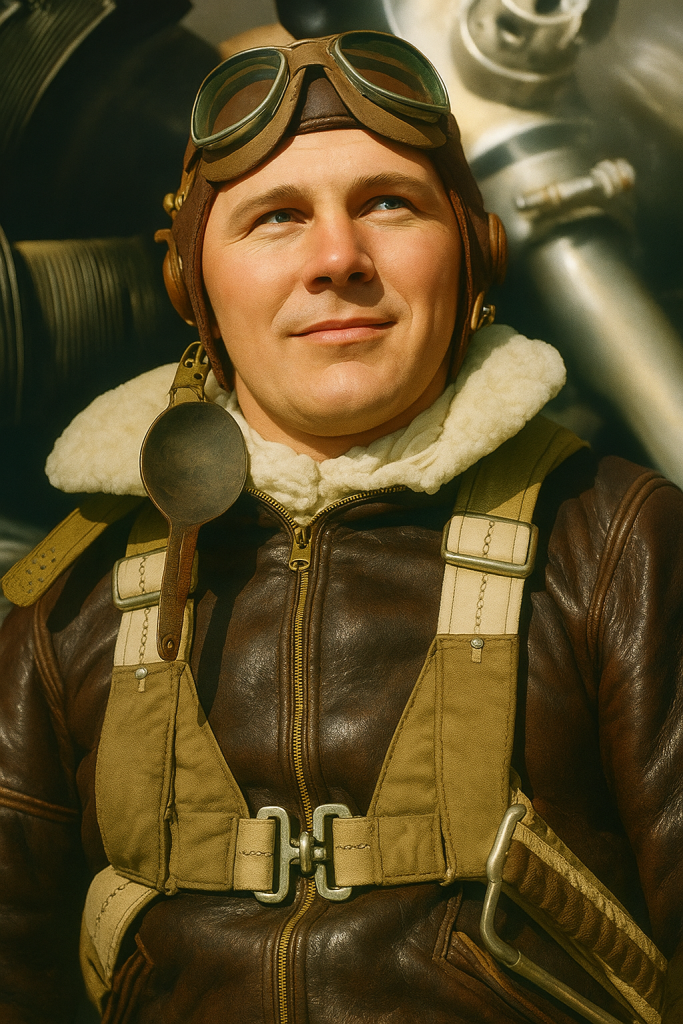Medal of Honor: David R. Kingsley – Ploesti Raid, June 23, 1944
Lagging behind and descending fast, the crippled bomber was swarmed by German Me-109 fighters. Inside, the tail gunner lay bleeding badly from shrapnel wounds. Kingsley rushed aft, administered lifesaving first aid, and kept the gunner conscious.
June 23, 2025

 David R. Kingsley
David R. Kingsley
Second Lieutenant, U.S. Army Air Forces
Conflict: World War II
Unit: 97th Bombardment Group, 15th Air Force
Date of Action: June 23, 1944
Location: Near Ploesti, Romania
Summary of Action:
High over the oil fields of Ploesti—Nazi Germany’s fuel lifeline—Second Lieutenant David R. Kingsley flew into history, not just as a bombardier but as a symbol of ultimate sacrifice.
On June 23, 1944, during a daylight bombing raid deep into enemy territory, Kingsley’s B-17 was shredded by flak over the target area. Despite the damage, he completed his bomb run with precision, delivering a devastating blow to Axis resources. But the worst was still to come.
Lagging behind and descending fast, the crippled bomber was swarmed by German Me-109 fighters. Inside, the tail gunner lay bleeding badly from shrapnel wounds. Kingsley rushed aft, administered lifesaving first aid, and kept the gunner conscious. When another crewmember was wounded, Kingsley treated him too—caring more for his comrades than his own safety.
As the battered bomber broke apart under relentless fire, the order to bail out was given. But in the chaos, the wounded tail gunner’s parachute harness was lost. Without hesitation, Kingsley removed his own and strapped it onto the injured man.
He stayed behind.
The last the crew saw of David Kingsley, he stood calmly on the bomb bay catwalk—no parachute, no chance of survival, but full of resolve. The plane crashed moments later.
He saved a life by giving his own.

Medal of Honor Citation:
For conspicuous gallantry and intrepidity in action at the risk of life above and beyond the call of duty, 23 June 1944 near Ploesti, Rumania, while flying as bombardier of a B-17 type aircraft.
On the bomb run, 2d Lt. Kingsley’s aircraft was severely damaged by intense flak and forced to drop out of formation, but the pilot proceeded over the target and 2d Lt. Kingsley successfully dropped his bombs, causing severe damage to vital installations.
The damaged aircraft, forced to lose altitude and lag behind the formation, was aggressively attacked by three Me-109 aircraft, causing more damage and severely wounding the tail gunner in the upper arm. The radio operator and engineer notified 2d Lt. Kingsley that the tail gunner had been wounded and needed help.
2d Lt. Kingsley made his way back to the radio room, skillfully applied first aid, and succeeded in checking the bleeding. The tail gunner’s parachute harness and heavy clothes were removed, and he was covered with blankets to make him as comfortable as possible.
Eight Me-109 aircraft again attacked the aircraft, and the ball turret gunner was wounded by 20mm shell fragments. He went forward to the radio room for treatment. A few minutes later, when the pilot gave the order to prepare to bail out, 2d Lt. Kingsley immediately assisted the wounded gunners with their parachutes.
In the confusion, the tail gunner’s harness could not be found. With utter disregard for his own means of escape, 2d Lt. Kingsley unhesitatingly removed his own parachute harness and adjusted it to the wounded tail gunner.
As the aircraft continued to disintegrate, the crew bailed out. When last seen, 2d Lt. Kingsley was standing on the bomb bay catwalk. The plane crashed and burned. His body was later found in the wreckage.
2d Lt. Kingsley, by his gallant heroic action, was directly responsible for saving the life of the wounded gunner.
